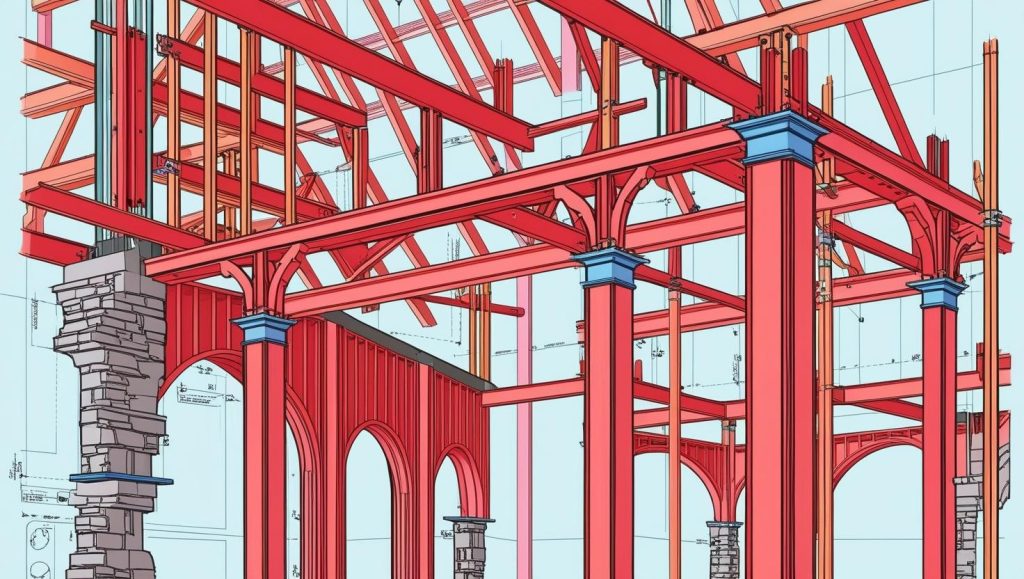Structural systems play a vital role in architecture, determining the stability, strength, and longevity of buildings. Understanding different structural systems is crucial for students studying architecture and engineering. This article provides comprehensive Structural Systems in Architecture Homework Help, covering fundamental concepts, types of structural systems, their applications, and expert resources.

What Are Structural Systems in Architecture?
Structural systems refer to the framework of a building that supports its weight and resists external forces. These systems ensure stability, safety, and efficiency in construction. The main components of structural systems include:
- Load-bearing walls – Support the weight of the building and transfer it to the foundation.
- Beams and Columns – Provide structural support and distribute loads evenly.
- Foundations – Transfer loads to the ground, ensuring stability.
- Trusses and Frames – Reinforce the overall structural integrity of buildings.
For further reading, visit the American Society of Civil Engineers (ASCE) or the Council on Tall Buildings and Urban Habitat (CTBUH).
Types of Structural Systems in Architecture
Architectural structures utilize various systems based on function, aesthetics, and material choice. The major types include:
1. Load-Bearing Structures
Traditional buildings rely on thick walls to support loads. These structures are commonly found in historic architecture.
2. Frame Structures
A skeletal frame of beams and columns distributes the building’s weight. This system is widely used in modern construction.
3. Truss Systems
Trusses use triangular configurations to provide strength while reducing material weight. They are often used in bridges and large-span roofs.
4. Shell Structures
These structures use curved surfaces, such as domes and vaults, to support loads efficiently. They are common in stadiums and auditoriums.
5. Tension Structures
Tension systems, such as tensile fabric structures, rely on stretched materials to maintain stability. These are used in modern pavilions and exhibition centers.
For more insights, explore MIT Architecture and The Structural Engineering Association.
Importance of Structural Systems in Architecture
- Ensuring Safety and Stability – Proper structural design prevents collapses and enhances durability.
- Optimizing Material Usage – Engineers use efficient designs to reduce material waste.
- Enhancing Aesthetic Appeal – Architectural styles depend on the structural system used.
- Supporting Sustainable Construction – Advanced structural systems integrate eco-friendly materials and energy-efficient designs.
How to Get Structural Systems in Architecture Homework Help
Understanding structural systems can be challenging. Here are ways to get Structural Systems in Architecture Homework Help:
1. Online Learning Platforms
Websites such as Khan Academy and Coursera offer detailed courses on structural systems.
2. Architectural Journals and Books
Recommended resources include:
- Structures: Or Why Things Don’t Fall Down by J.E. Gordon
- Building Structures Illustrated by Francis D.K. Ching
3. University Resources
Access academic libraries, discussion groups, and expert lectures for in-depth knowledge.
4. Professional Organizations
Joining groups like the Structural Engineers Association provides networking and educational opportunities.
Conclusion
Structural systems are essential in architectural design, ensuring buildings remain stable, functional, and aesthetically pleasing. Students seeking Structural Systems in Architecture Homework Help can utilize online resources, textbooks, and professional organizations to enhance their knowledge.


